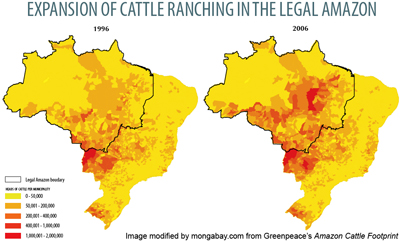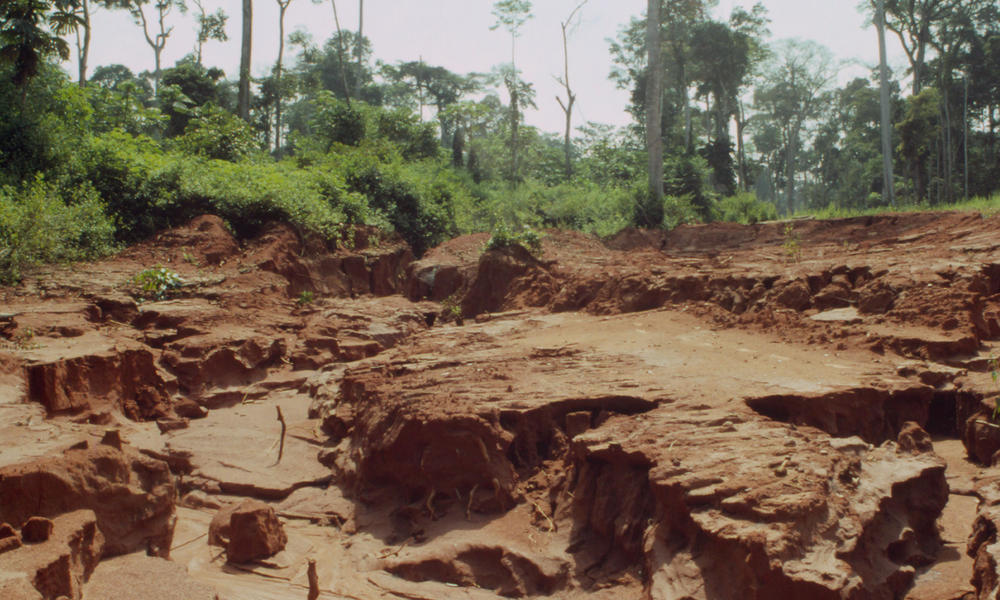Introduction
Deforestation is one of the planet’s worst enemies. Since 1990, the world has lost 1,000 football fields worth of forest every hour, almost 30 million acres yearly. And while efforts have been put forth by many countries such as Brazil and Belize to curb the illegal and legal ways to cut down swaths of trees, the climate effects of deforestation is still being seen.

And we hear about it pretty often as well. My god, the number of time another teacher or student has said “let’s use electronics to save the trees” is mind-numbing. Every time someone tells me “stop killing the trees” I just want to… you know. But what most people don’t understand is that the largest cause of deforestation is not to make pulp for paper, but instead merely to clear room and convert land for agricultural uses. Let’s take a look at why agriculture takes up so much space and the potential consequences of our plantations.

Food and Farmland
According to a report by Greenpeace, nearly 80% of Brazil’s Amazon rainforest is for the sole reason of cattle ranching. Brazil became the world’s largest export of beef by sacrificing the Amazon, with more than 38,600 square miles cleared out for farming from 1996-2009. In 2008 the number of cattle just in the Amazon was at 80 million, compared to the entire US herd at 96 million. Since cattle need lots of land to graze, the higher the demand for Brazilian beef, the more land that ranchers will end up clearing for their work.

Plants like soy traditionally grown in large scale plantations supply 1/4 of vegetable oils globally, while oil palm production which also requires the clearing of the forest, is expected to double by 2020.

Additionally, deforestation is a leading cause of soil erosion, which has caused 1/3 of the world’s arable land to become unusable, which in turn also drives more ranchers to go towards deforestation, which is hard to reverse and takes many years to restore.

As the world population grows and more food is needed to feed the next generations, we will see more pressure put on the forests by farmers and ranchers trying to survive.
Additionally, the increasing popularity of biofuels could be problematic for the remaining global forest land. Biofuels can be readily produced from plant oils such as oil palm, which are grown on cleared lands. Here’s a video on the possible effects of the surge of biofuels.
The Effects of Deforestation
Deforestation can cause a vicious cycle – because the act of deforestation drive climate change, which in turn hurts the food production of existing farmland and motivates farmers to cut down more trees in order to meet quotas.

The long term effects of deforestation could have a myriad of harmful impacts on the environment. Below, a graphic lists four major effects that occur when trees are cut down by the thousands. All five of the nodes are effects and causes of each other – that is, a loss of biodiversity causes food insecurity, which leads to more deforestation, which leads to greater CO2 emissions, and so on. For example, if current deforestation rates continue throughout the years, the Amazon’s soy production could fall by 25% by 2050. Not good when the world is depending on your food production.
.png)
Even though deforestation could be the key to solving and preventing the climate change crisis, forest renewal efforts seem to have fallen by the wayside. According to M. Sanjayan, executive vice president and senior scientist at Conservation International, the international community needs to prioritize forest conservation: “If you look at the $400 billion that is being spent globally to deal with emissions, only 2% of that goes towards protecting and restoring forests,” he said. “The science is really clear that we are on a dangerous path and if the world temperature increased by more than 1.5 or 2% it would make life extraordinarily difficult for billions of people around the planet, particularly those who live along the coast. Forests give us the most efficient way we know for mitigating that.”
Conclusion
It’s pretty clear that the world should move towards protecting the forests in order to efficiently combat global warming. A big part of this is changing how we view agriculture and the awareness towards agricultural deforestation. It’s important for people to know that one of the biggest factors towards the changing climate is ourselves and how we decide to eat food as a consumer.
Sources
https://nvdatabase.swarthmore.edu/content/us-activists-stop-burger-king-importing-rainforest-beef-1984-1987
http://www.takepart.com/article/2016/07/19/un-forests-ag-report/
Palm Oil, Deforestation, and the Fast Food Industry: Would You Like a Side of Forests with That?
http://www.latimes.com/world/global-development/la-fg-global-earth-day-20170421-story.html
http://wwf.panda.org/about_our_earth/deforestation/deforestation_causes/forest_conversion/